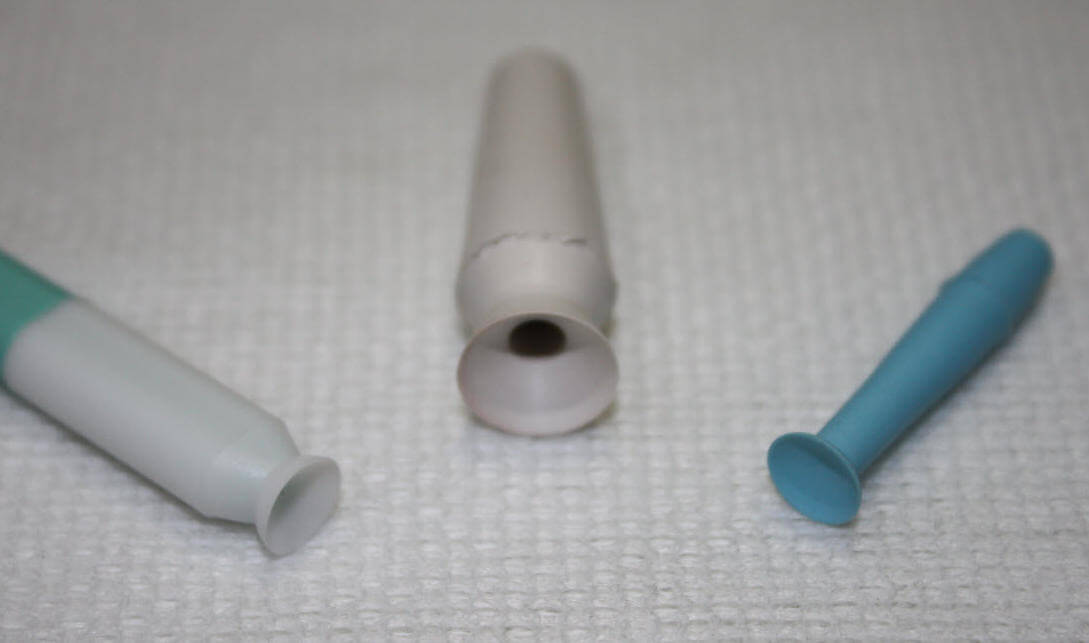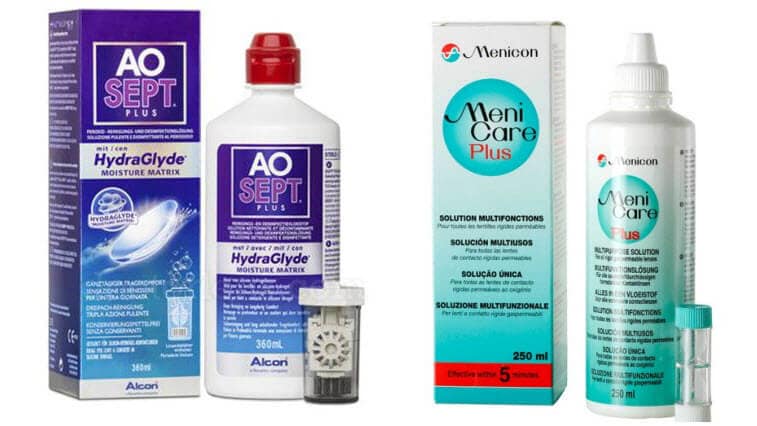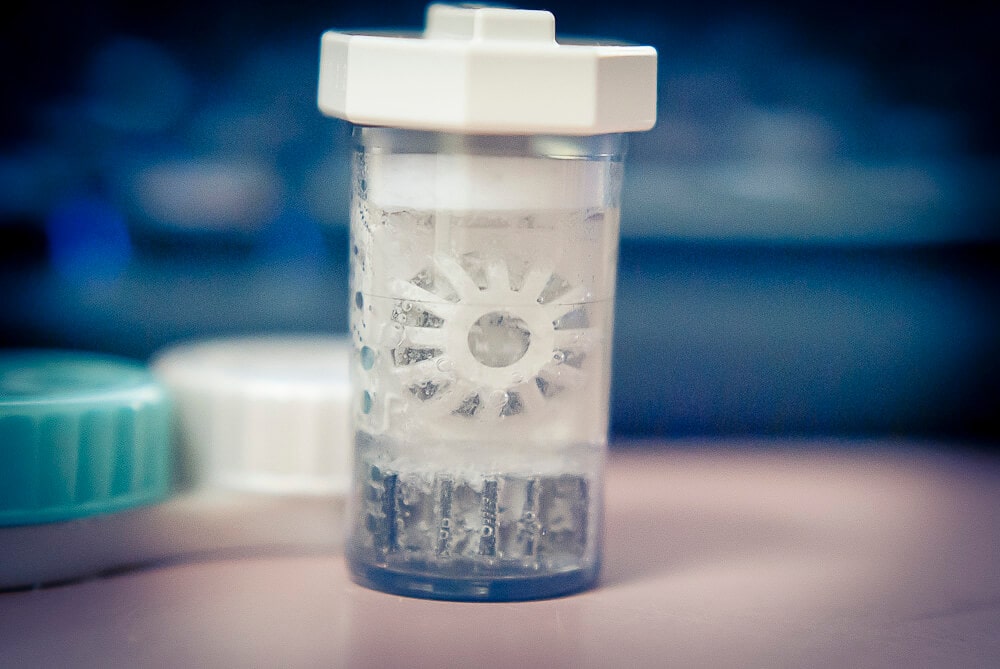CARE OF ORTHO-K LENSES
Always wash and rinse your hands thoroughly and dry them with a lint-free towel/tissue before handling contact lenses. All traces of soap, perfumes, hair-spray, creams and lotions should be removed from your hands and around your eyes.
Remember NO TAP WATER TO BE USED ON THE LENSES OR CASE AT ANY TIME
HOMEWORK FOR DELIVERY
While waiting for the delivery of your new Ortho-K lenses it is important to get comfortable with the daily routine.
Watch the video below for training on how to practice the insertion of your Ortho-K lenses prior to delivery.
INSERTION
To avoid confusion, make a habit of inserting the same lens – generally the right lens – first. You will notice that the right lens is green and the left lens is blue. Minimise the risk of lens loss by plugging the sink or using a paper towel over the drainage opening.
Watch the video below for instructions on how to insert your Ortho-K lenses.
Shake your case and lid out to dry. Leave it open on a tissue overnight so it is ready for use the next morning.
DISLODGED LENSES
Occasionally a lens may become dislodged within your eye. This may be uncomfortable, but do not panic.
There are only four possible places the lens can dislodge to. under the top lid, under the bottom lid, on the nose side of the eye or the outer edge near the ear.
Look in a mirror to establish where the lens has moved to.
Move your eyes in a direction away from where the lens is located. For example if the lens in your right eye is on the white of your eye nearest your nose, move your eyes to the right.
Then create a stop on the other side of the lens by applying pressure on the lids with your fingers. This will prevent the lens moving so that when you slowly look towards where the lens is located it will be moved back onto your cornea.
Sometimes it helps to nudge the lens with your lids. Avoid directly pushing the lens back into place as this can damage the surface of your eye.
REMOVAL
This is to be done in the morning upon wakening. First use your index finger to push up your bottom eyelid and ensure that the retainer lenses are moving and are not bound. Bound lenses are stuck in place on your eye due to mucous adhesion – this is normal in Ortho-K lenses. To unbind a lens, press firmly on the white of your eye at the edge of your cornea at 12 and 6 o’clock several times.
It is a good habit to wash your closed eyes with hot water and soap just like your hands.
Method 1 – Manual removal (preferred method)
Watch the video below for instructions on how to remove your Ortho-K lenses.
Method 2 – Suction Tools
Suction removal tools can be used to easily remove your lenses. These are simply placed on the lens and taken out of the eye. However, make sure you can remove your lenses manually in case you do not have a suction tool with you.

CLEANING
Always clean your lenses after wear. An effective cleaning process is vital to ensure comfortable, hygienic and infection-free Ortho-K lens wear. With correct cleaning, contact lenses will feel better on your eyes, allow better eye health and vision, and dramatically reduce bacteria and other contaminants.There are several types of rigid lens cleaning solutions: Peroxide based systems like AO Sept and multipurpose rigid lens solutions like Menicare and Boston Simplus. There are several steps involved in cleaning and storing Ortho-K lenses that vary depending on the system.

Hydrogen Peroxide (AO Sept with Hydraglyde)
These solutions work by having your contact lenses immersed and sterilised in 3% hydrogen peroxide. Over the course of a 6 hour period the catalyst in the case converts the hydrogen peroxide into water and oxygen gas. This cleaning solution has the advantage that when your lenses are removed from the case they require no rinsing as they are covered only in sterile, non-preserved water. They also generally require no rubbing step, which decreases the risk of accidental breakage. The case can be left to air dry when not in use, and should be replaced with each new bottle of solution. AO Sept now had the addition of Hydraglyde, an ingredient which improves the wettability of your contact lenses, making them more useful for scleral patients with long day-wear times.
To clean your lenses fill the case up to the line, place your lenses in the correct cage-holder. Then submerge the case and screw closed. Take care when transporting the case as sometimes the small gas-release hole can leak solution.
Care should be taken not to get the un-neutralised peroxide in your eyes as this will sting painfully. If this occurs rinse thoroughly with water and contact your optometrist if the pain persists or your vision is affected.

Menicare Plus Cleaning
1. CLEAN: Place a few drops of rigid contact lens solution on the palm and the lens, then rub with your finger-pad for at least 10 seconds on each side. The back surface (concave) is best cleaned by moving your thumb across the surface. This step removes material that deposits on the lens during wear. Whilst Ortho-K lenses are strong, with incorrect technique or too much force they can break.
2. DISINFECT AND CONDITION: Place the lens in fresh solution in your lens case, ensuring the lens is completely submerged. This step kills microbes on your lenses and prepares the surface of your lens to stay wet throughout wear, increasing comfort. Store your lenses in this solution for at least 4 hours for the cleaning process to be complete. NEVER rinse or store your lenses in tap water, as micro-organisms are plentiful and can cause infections in your eyes.
Regular Deep Protein Removal (PROGENT)
Patients are advised to use a deeper protein removal product such as Progent at least every month. To use Progent, combine the A and B vials in a lens case and submerge your lenses in this for 30 – 60 mins. Use an old case for this.
Ensure your lenses are thoroughly rinsed and cleaned after using Progent before inserting into your eyes.
To thoroughly remove all traces of Progent prior to wearing rub and rinse the lens in Menicare Plus solution then place in your new AO sept basket and rinse with AO Sept. then store in fresh AO Sept for the day.
FIRST NIGHT OF WEAR
You should not experience any discomfort from the lens while you are sleeping; however, it is not usual to experience some discomfort with your eyes open as you get used to Ortho-K lens wear. This generally improves with time.
When you wake up, insert a drop of preservative free artificial tear solution into the eye to increase moisture and assist in the lens movement on the eye. If the lens is bound it will not move – this means it may be necessary to manually loosen the lens. Upon removal of the Ortho-k lens you should notice some improvement in your unaided vision. This improved vision will last most of the day. After approximately two weeks vision should be stable all day for most forms of orthokeratology vision correction.
FOLLOW UP CARE
Follow up appointments are vital to the monitoring and success of your new Ortho-K procedure. The first follow up appointment will be scheduled for the day after your first night of wear. The other follow up appointments will be determined by your Ortho-K practitioner based on your response to the first night of Orthokeratology therapy and the severity of your vision correction.
RISK OF BROKEN ORTHO-K LENSES
Ortho-K contact lenses are made of a strong polymer, which resists damage in normal wearing circumstances. However, they can still break if mishandled. There are some tricks you can learn to minimise this chance.
To increase comfort and oxygen permeability, Ortho-K lenses are designed to be as thin as possible without compromising their structural integrity: most are 0.2mm thick or less. Because the lenses weigh very little, if you drop one it should not break unless it is then trampled on. If a lens falls on the floor, keep your feet still until you have spotted it. If you cannot see well without your lens, call to a friend or family member to help and remember to caution them to be careful where they tread!
The lenses are quite small and prone to fall into difficult to retrieve places such as down the sink-hole! Especially when you are learning how to insert and remove your lenses, make sure you use your lenses in a controlled environment such as a quiet bathroom with the plug inserted, or on a table with a clean towel laid flat. This way, if your lens drops you can find it easily and reduce the risk of breakage.
The main handling habits that may cause a lens to break include:
- Pushing down on the convex side of the lens. This can occur if the lens lands on a mirror or flat surface. Instead of trying to grab the lens, gently slide it off to the edge of the surface or use a suction tool to suck it off the surface.
- Removing a lens too firmly from the suction tool. This is especially relevant for scleral lenses. Slide the lens off the suction point instead, or release the suction by squeezing the body of the suction tool to reduce pressure.
- Forcing the lens to bend while cleaning. Some force is required to clean a rigid lens using your cleaning solution, but not much ‒ the friction of your skin surface will do most of the job. If you are pressing down on both sides of a rigid lens this will cause it to flex, eventually snapping if too much force is applied.

It is very rare for a lens to break in your eye unless something hits your eye or your removal technique is incorrect/very forceful. The solutions you use to clean your lenses will not weaken or degrade them ‒ not even the powerful Progent fortnightly deep cleaner.
IN CASE OF BREAKAGE
We understand that when you are learning how to use your lenses you may be inadvertently forceful during insertion, removal or cleaning. Because of this we offer a 1-month manufacturer’s replacement warranty on accidental breakages. Outside of this period, your lens is not covered by a warranty and the lens will need to be replaced at your cost if damaged or lost.
If you do lose or damage a lens, please don’t fret. Just give our friendly team a call and we will arrange a replacement as quickly as we can.
IMPORTANT THINGS TO REMEMBER
- Do not modify the recommended cleaning/disinfection routine without consulting your orthokeratologist. Shortcuts may save money, but may result in ineffective cleaning or disinfection. This could damage your lenses or lead to a potentially blinding infection of your eyes.
- Always use the same solutions you have been prescribed. Other solutions may not be compatible and may cause discomfort or allergic reactions.
- Never clean or store your rigid lens with soft contact lens solution. These products work in a different way to the rigid lens solutions and will not clean or condition your rigid lenses as well.
- Replace your lens case every 3 months to avoid microbial contamination. Do not touch the tips of solution bottles to anything and replace their caps after use.f you forget to wear your Ortho-K lenses one night and your vision is sub-par the next day your Ortho-K lenses will generally provide acceptable vision during the day when they are worn, although may be less comfortable than during sleep.
- If you forget to wear your Ortho-K lenses one night, your Ortho-K lenses will generally provide acceptable vision during the day when they are worn, although may be less comfortable than during sleep.
- Stop lens wear if you experience persistent discomfort or redness – if in doubt, consult your orthokeratologist. If your eyes are very painful after hours, consult your local hospital or emergency eye clinic.
- Lenses should be replaced EVERY 12 months.
